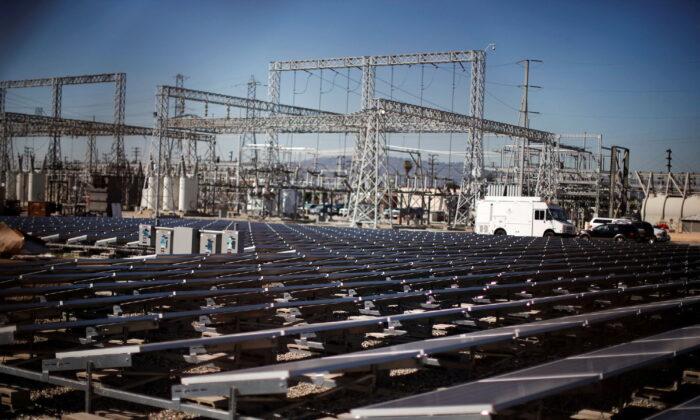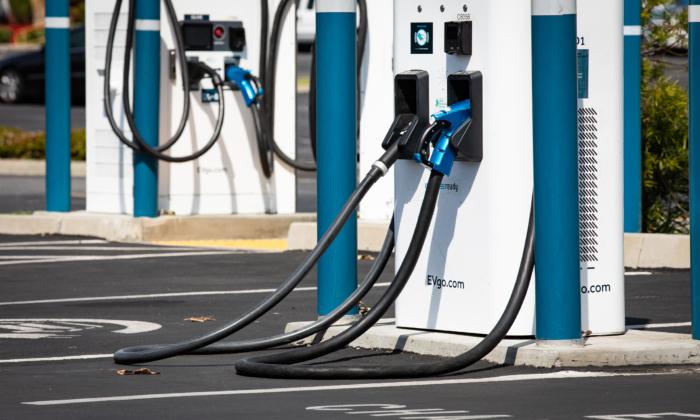The way to fight back?
- PG&E: $48 billion
- Southern California Edison: $82 billion
- Total: $130 billion
California’s Electricity Reform Collapse
Instead of looking to the supposed price gouging by the private utilities, as the L.A. Times demands, it’s worth remembering the state’s own follies from the past three decades, during which I’ve written against all the anti-market attempts at restructuring. For those who want to read the details, a good history of the early years is “The History of Electricity Restructuring in California” from 2002 by Carl Blumstein, L.S. Friedman, and R.J. Green.The attempt at “deregulation” the authors begin with is Assembly Bill 1890, which California Gov. Pete Wilson signed in 1996. It’s worth adding something they left out: 1996 was the only year in the past five decades in which Republicans controlled a house of the Legislature, in that case the Assembly under Republican Speaker Curt Pringle, later Anaheim’s mayor. Mr. Wilson was also a Republican. So this was a Republican attempt at “privatization,” with cooperation from California Senate Democrats.
AB 1890 set up the California Power Exchange (PX), which, according to the 2002 paper, “was required to operate an hour-by-hour spot market, in which generators could sell and retailers could buy power. ... The new markets began operation for April 1, 1998. This was three months behind the original start date, but it had not proved possible to create the necessary computer systems in time.” It seems every computer system the state sets up has problems. “The PX ran quite smoothly, with low prices.”
Then, disaster struck.
“Late in the spring of 2000, California’s new electricity market began to collapse,” the paper reads. “In May, the average PX price was $50/MWh, higher than any previous month. There were also numerous price spikes. ... By the end of January, the collapse was complete. Blackouts occurred on eight days during the winter and spring even though demand was far below the summer peak. The Power Exchange suspended operations, and the CAISO [California Independent System Operator), SCE, and PG&E were all insolvent.”
For some reason, the study didn’t mention California Gov. Gray Davis’s role in this crisis. I remember in October 2000, he actually took a month off to “study” the problem. Then he panicked and signed contracts for up to 20 years for natural gas at the height of the market price.
But some of the contracts had to be paid for up to 20 years.
Schwarzenegger’s AB 32 Disaster
In his first two years in office, 2003–05, Mr. Schwarzenegger governed reasonably, cutting taxes and restraining spending. Then, in November 2005, voters rejected his plank of reform initiatives, such as banning using union dues for political campaign initiatives. He then flipped from conservative to liberal as he headed to his November 2006 reelection, which he won.“It is the intent of the Legislature that the State Air Resources Board consult with the Public Utilities Commission in the development of emissions reduction measures, including limits on emissions of greenhouse gases applied to electricity and natural gas providers regulated by the Public Utilities Commission in order to ensure that electricity and natural gas providers are not required to meet duplicative or inconsistent regulatory requirements.
“It is the intent of the Legislature that the State Air Resources Board design emissions reduction measures to meet the statewide emissions limits for greenhouse gases established pursuant to this division in a manner that minimizes costs and maximizes benefits for California’s economy, improves and modernizes California’s energy infrastructure and maintains electric system reliability, maximizes additional environmental and economic co-benefits for California, and complements the state’s efforts to improve air quality.”
Renewable Energy and EV Mandates
Next, throw in renewable mandates, such as this from December 2022: “The California Air Resources Board today approved the final proposed 2022 Scoping Plan, a world-leading roadmap to address climate change that cuts greenhouse gas emissions by 85% and achieves carbon neutrality in 2045. The 2022 Scoping Plan provides a detailed sector-by-sector roadmap to guide the world’s fourth-largest economy away from its current dependance [sic] on petroleum and fossil gas to clean and renewable energy resources and zero-emission vehicles.”Renewable energy, such as wind and solar, requires expensive new power lines on top of the existing power lines. The zero-emission vehicle mandate is for 100 percent new cars to be zero-emission by 2035.
And now AI—artificial intelligence—is developing rapidly in Silicon Valley, which leads the world in this area, and requires even more electric juice every year.
In a future article, I’ll discuss some free-market remedies to restore to California a sensible electricity market and lower prices for consumers.







